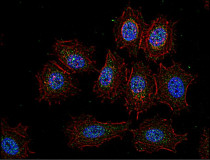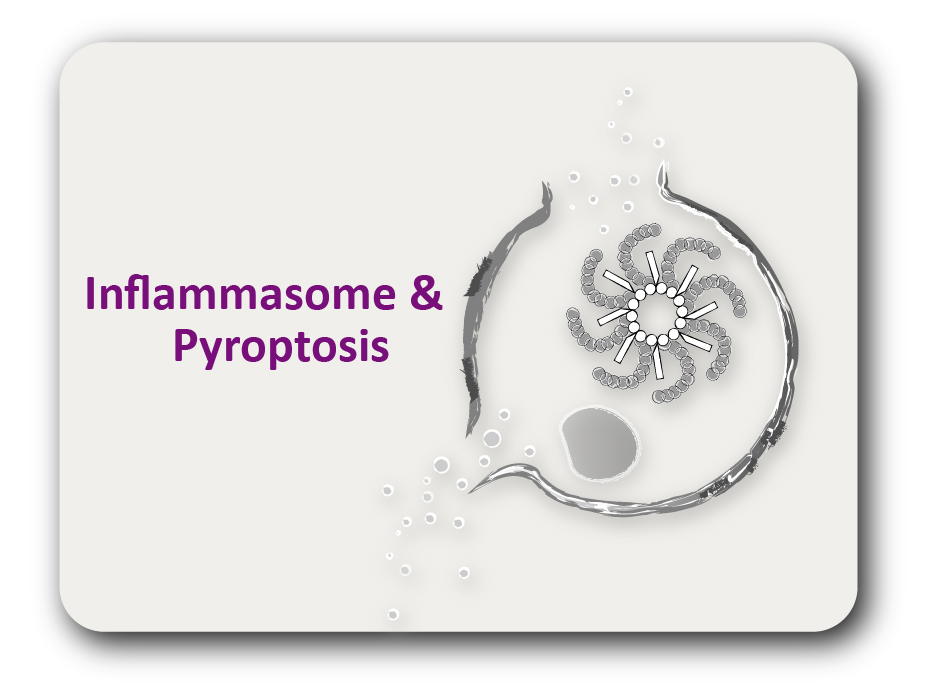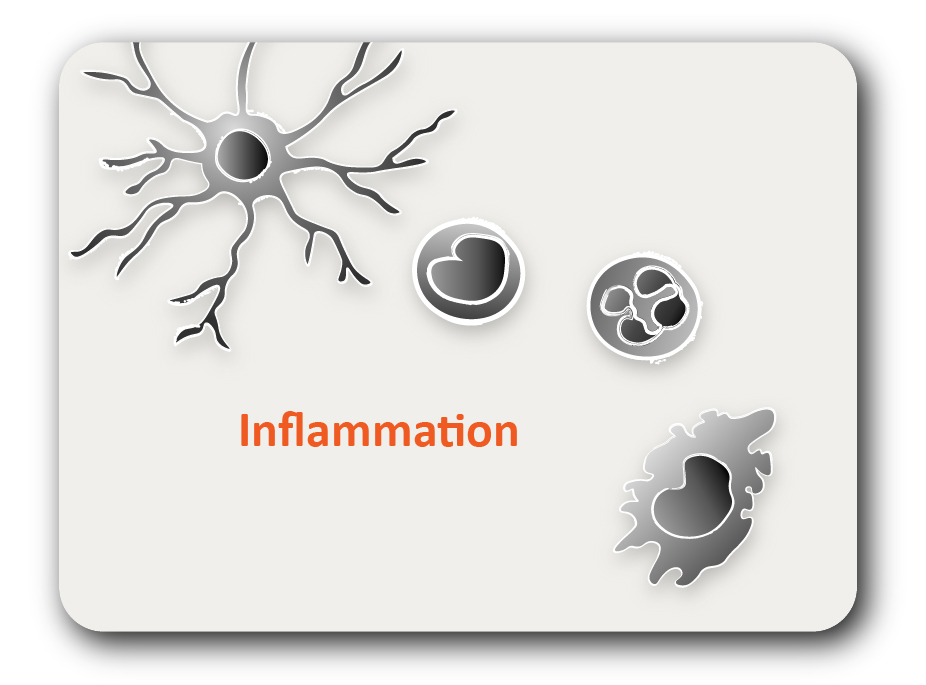ARG62966
anti-CSK antibody [CSK-04]
anti-CSK antibody [CSK-04] for ICC/IF,Immunoprecipitation,Western blot and Human,Mouse
Signaling Transduction antibody; Src Family Protein Tyrosine Kinases antibody
概述
| 产品描述 | Mouse Monoclonal antibody [CSK-04] recognizes CSK |
|---|---|
| 反应物种 | Hu, Ms |
| 应用 | ICC/IF, IP, WB |
| 特异性 | The clone CSK-04 reacts with Csk (C-terminal Src kinase), a 50 kDa non-receptor protein tyrosine kinase expressed in cytosol. |
| 宿主 | Mouse |
| 克隆 | Monoclonal |
| 克隆号 | CSK-04 |
| 同位型 | IgG1 |
| 靶点名称 | CSK |
| 抗原物种 | Human |
| 抗原 | Bacterially expressed recombinant fragment of human Csk corresponding to aa 330-450. |
| 偶联标记 | Un-conjugated |
| 別名 | Protein-tyrosine kinase CYL; C-Src kinase; Tyrosine-protein kinase CSK; EC 2.7.10.2 |
应用说明
| 应用建议 |
|
||||||||
|---|---|---|---|---|---|---|---|---|---|
| 应用说明 | WB: Weak non-specific band of cca 60 kDa is detected in human cell lines in lower antibody dilutions. IP: The immunosorbent (CSK-04 antibody covalently bound to beads) immunoprecipitates Csk from cell lysates. * The dilutions indicate recommended starting dilutions and the optimal dilutions or concentrations should be determined by the scientist. |
||||||||
| 阳性对照 | ICC/IF: HeLa |
属性
| 形式 | Liquid |
|---|---|
| 纯化 | Purified from ascites by protein-A affinity chromatography. |
| 纯度 | > 95% (by SDS-PAGE) |
| 缓冲液 | PBS (pH 7.4) and 15 mM Sodium azide |
| 抗菌剂 | 15 mM Sodium azide |
| 存放说明 | For continuous use, store undiluted antibody at 2-8°C for up to a week. For long-term storage, aliquot and store at -20°C or below. Storage in frost free freezers is not recommended. Avoid repeated freeze/thaw cycles. Suggest spin the vial prior to opening. The antibody solution should be gently mixed before use. |
| 注意事项 | For laboratory research only, not for drug, diagnostic or other use. |
生物信息
| 数据库连接 | |
|---|---|
| 基因名称 | CSK |
| 全名 | c-src tyrosine kinase |
| 背景介绍 | C-terminal Src kinase (Csk) is a non-receptor protein tyrosine kinase which resembles Src-family kinases, but unlike them lacks the conserved autophosphorylation site, the regulatory C-terminal tyrosine as well as myristylation and palmitylation. Csk negatively regulates Src-family kinases by phosphorylation of their C-terminal regulatory tyrosine. Disruption of the csk gene causes constitutive activation of Src-family kinases, and overexpression of Csk usually counteracts their signaling. The Csk-mediated regulation of those Src-family kinases that are localized in lipid rafts is enabled by a ubiquitously expressed transmembrane adaptor PAG (also known as Cbp, Csk-binding protein), which recruits Csk. |
| 生物功能 | Non-receptor tyrosine-protein kinase that plays an important role in the regulation of cell growth, differentiation, migration and immune response. Phosphorylates tyrosine residues located in the C-terminal tails of Src-family kinases (SFKs) including LCK, SRC, HCK, FYN, LYN or YES1. Upon tail phosphorylation, Src-family members engage in intramolecular interactions between the phosphotyrosine tail and the SH2 domain that result in an inactive conformation. To inhibit SFKs, CSK is recruited to the plasma membrane via binding to transmembrane proteins or adapter proteins located near the plasma membrane. Suppresses signaling by various surface receptors, including T-cell receptor (TCR) and B-cell receptor (BCR) by phosphorylating and maintaining inactive several positive effectors such as FYN or LCK. [UniProt] |
| 产品亮点 | Related Antibody Duos and Panels: ARG30169 Src Family Protein Tyrosine Kinases Antibody Panel Related products: Csk antibodies; Csk Duos / Panels; Anti-Mouse IgG secondary antibodies; Related news: Tools for studying H. pylori diseases |
| 研究领域 | Signaling Transduction antibody; Src Family Protein Tyrosine Kinases antibody |
| 预测分子量 | 51 kDa |
| 翻译后修饰 | Phosphorylated at Ser-364 by PKA, leading to increased activity. Autophosphorylated. |
检测图片 (1) Click the Picture to Zoom In






